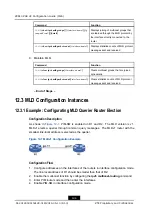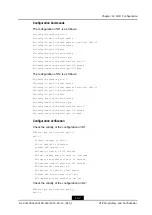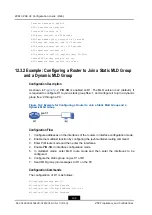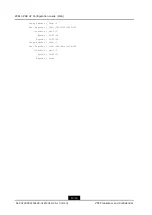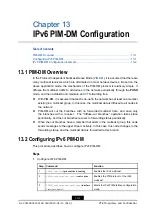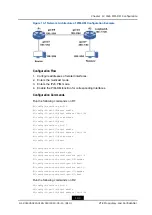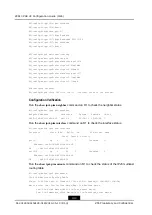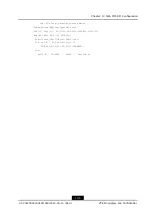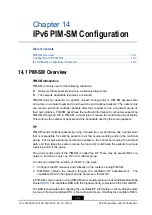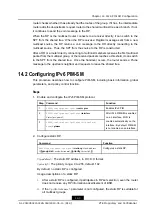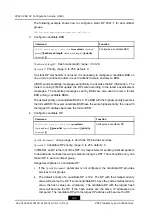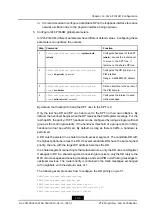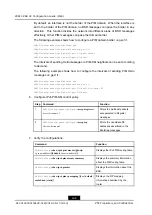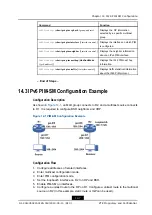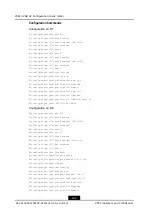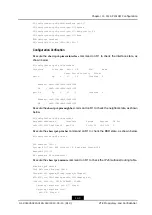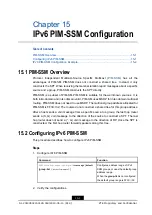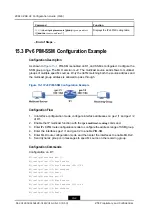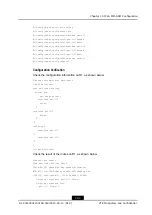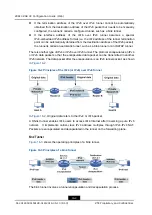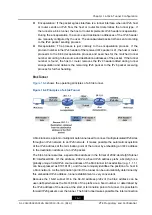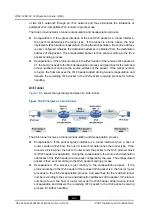
ZXR10 ZSR V2 Configuration Guide (IPv6)
The following example shows how to configure a static RP 2001::1 for all multicast
groups.
ZXR10(config-mcast-ipv6-pim)#static-rp 2001::1
3.
Configure candidate BSR.
Command
Function
ZXR10(config-mcast-ipv6-pim)#
bsr-candidate
<
ipv6-ad
dress
>[{[
hash-mask-length
<
hash-mask-length
>]
,
[
priority
<
priority
>]}]
Configures a candidate BSR.
<
hash-mask-length
>: Hash mask length, range: 0 to 128.
<
priority
>: Priority, range: 0 to 255, default: 0.
If a static RP mechanism is not used, it is necessary to configure a candidate BSR on
one or more multicast routers in each multicast domain and elect a BSR.
A BSR sends bootstrap messages periodically to advertise the RP information. The
routers running PIM-SM update the RP state according to the latest advertisement
messages. The bootstrap messages sent by BSRs are also used to elect a formal
BSR among candidate BSRs.
The default priority of a candidate BSR is 0. The BSR with the highest priority becomes
the formal BSR. If several candidate BSR have the same highest priority, the one with
the largest IP address becomes the formal BSR.
4.
Configure candidate RP.
Command
Function
ZXR10(config-mcast-ipv6-pim)#
rp-candidate
<
ipv6-address
>[{[
group-list
<
prefix-list-name
>]
,
[
priority
<
priority
>]}]
Configures a candidate RP.
<
prefix-list-name
>: Group range in which the RP provides services.
<
priority
>: Candidate RP priority, range: 0 to 255, default: 0.
In PIM-SM, an RP is the root of the RPT. It is responsible for sending multicast packets
to downstream multicast receiving members along the RPT. There should be only one
formal RP in each multicast group.
Usage descriptions of a candidate RP:
i.
If the <
prefix-list-name
> parameter is not configured, the candidate RP provides
services for all groups.
ii.
The default priority of a candidate RP is 192. The RP with the smallest priority
value will become the RP. If some candidate RPs have the same smallest priority
value, the hash values are compared. The candidate RP with the largest hash
value will become the RP. If the hash values are the same, IP addresses are
compared. The candidate RP with the largest IP address will become the RP.
14-4
SJ-20140504150128-018|2014-05-10 (R1.0)
ZTE Proprietary and Confidential

